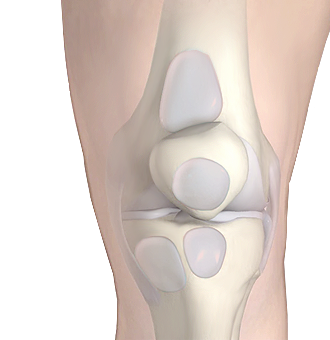What is Knee Bursitis?

Knee bursitis is also known by other names like the clergyman’s knee and the housemaid’s knee. It causes pain and swelling of the bursae in the knee.
The bursa is a thin sac that contains synovial fluid. It enables tissues like the tendon, the muscles, and the skin to slide over the bony surfaces. Thus reducing friction between these structures. Prolonged pressure, traumatic blows, and repetitive motions can irritate bursa. When this happens the development of bursitis occurs.
The knee has 11 bursae, but only three are susceptible to bursitis. These three include the prepatellar bursa, the infrapatellar bursa, and the pes anserinus.
The pes anserinus is located on the lower, inner part of the knee near the upper region of the shin bone. Knee bursitis of this region is common among middle-aged women and overweight people.
The prepatellar bursa is located above the kneecap. It’s often prone to develop this condition (bursitis). People in professions like gardening, roofing, and plumbing are more susceptible since they spend extended periods kneeling.
Symptoms of the Condition:
Symptoms vary depending on the type of bursa affected and the cause of inflammation. Most symptoms begin gradually and worsen after some time. Symptoms such as:
- Localized swelling: The bursa swells up along with the fluid, causing the knee joint to appear extremely large. The swollen area becomes soft and spongy
- Pain and tenderness: Knee bursitis patients experience pain and tenderness when they exert pressure on the knee. However, those with non-infected bursitis do not experience tenderness
- Range of motion: Severe bursitis makes it difficult to flex the knee
- Redness and warmth: The skin covering the affected area might become warm than any other place on the skin
- Fever: septic bursitis cause fever or chills in addition to other symptoms
Knee Bursitis Causes:
There are many different factors that can cause knee bursitis. The most common are as follows:
- Frequent falls
- Direct trauma to the knee such as falling
- Prolonged crawling such as when flooring or scrubbing floors
- Knee joint replacement or knee surgery
- Repetitive motions, e.g., during intense sports activities like running
- Knee arthritis
- Autoimmune conditions
- Infection
Diagnosing Knee Bursitis
The physiotherapist will conduct a thorough medical history. Then perform a physical examination to determine if you indeed have knee bursitis.
If he finds localized swelling and tenderness over the bursa when he applies pressure, a diagnosis is confirmed. An MRI may be performed to provide a definitive diagnosis of the condition.
Treating the Condition
The doctor may recommend physical therapy to reduce pain and inflammation, strengthen the knee muscles, improve balance and agility, strengthen the lower limb, and normalize the knee’s range of motion.
In severe cases, the doctor may recommend a knee bursa surgery that involves the removal of the bursa. A recovery program is essential to aid in recuperation.
How to Prevent Knee Bursitis
You can avoid developing the condition or a reoccurrence by:
- Wearing kneepads if you are working on your knees for a long time
- Maintain a healthy weight
- Avoid repetitive bending of the knees
- Take regular breaks to rest and stretch the knees
- Warm-up before embarking on a sports activity
- Increase an athletic activity gradually
If you are experiencing knee pain without relief, call us today to visit a specialist nearest you, at 888-409-8006. Offices conveniently located in South Florida; Boca Raton, Deerfield Beach & Plantation.
